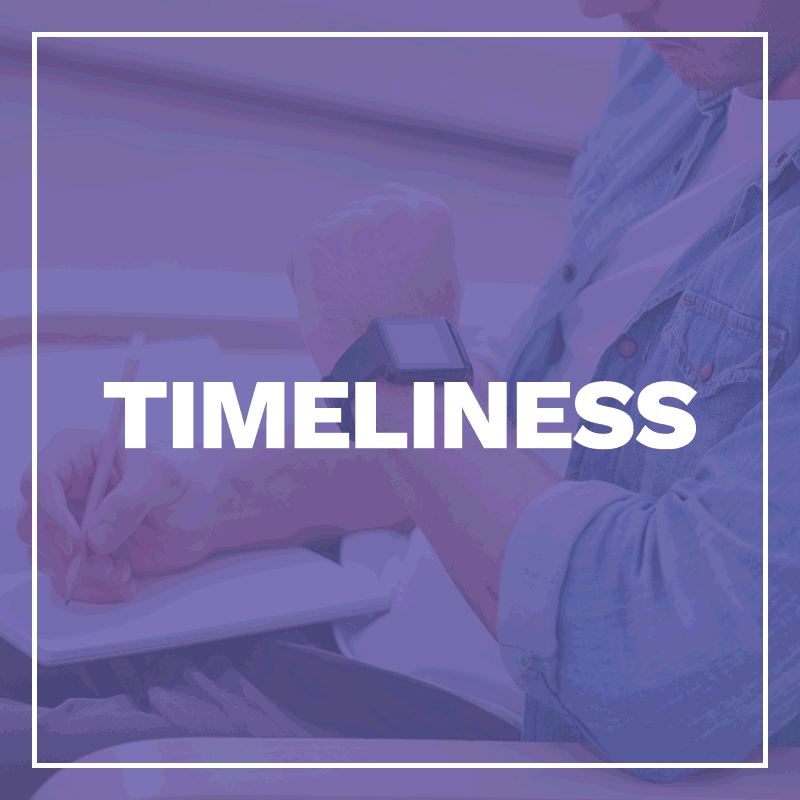List building- the practice I became very familiar with when a client of ours came to me and asked if I could get media coverage for a private event they were hosting in a prestigious clubhouse in California. While my midwestern ambition was singing “paparazzi,” reality had me feeling this big:

Maybe I was being an overly confident, stubborn PR dreamer, trying to deliver impressive outcomes, but I did learn a lot in the process. Before we dive into the best practices, it’s vital we’re all on the same page about the usage of these lists.
Reaching out to the masses is appropriate in certain situations. The situations are pretty black and white. When in doubt, ask yourself the following:
- I’m reaching out for placement of a thought leadership article. Can I reach out to more than one person at a time? No.
- I’m reaching out regarding company news on behalf of my client. Can I reach out to more than one person at a time? Yes.
This doesn’t mean you can cheat out on the personalized outreach. PR is a patient and delicate practice. Now that we have that straightened out, here’s how to build your RBM #werkbranch style media list.
Learn more about the difference between Good PR and Desperate PR.
The Material
Before thinking about any personas or groups of professionals, you’ll need to identify exactly what you’re pitching and the purpose of your outreach. Sometimes I’ll agree to build a list and outreach plan without even thinking twice about the planning part. Your angle is what will define your audience.
Need a refresher on the 7 elements of newsworthiness? Check this out: Share on XStart by questioning if your material even falls under the seven categories of newsworthiness and answering the almighty question: “Why should they care?”
As a refresher, keep these in mind during any pitch:
- Timeliness
- Proximity
- Human Interest
- Conflict
- Possible Future Impact
- Prominence (if you’re reaching out to local press)
- Shock/Bizarre value

Whether it’s a request to cover a company announcement, request to cover/attend an event or simply request to place a thought leader piece, your outreach must have one or two newsworthy angles to give it a purpose. If you don’t have a reason for them to take action, your outreach is floppy bologna.
If you don’t give your audience a reason to take action, your outreach is floppy bologna: Share on XThis step will coincide with the beginning of our next step, the personas.
Who’s Speaking?
Who you reach out to will begin to surface as you’re working through stage one. Once you find your angle, you’ll better understand who would benefit from this resource or news the most. I’ve discussed this briefly in my post about using back to school shopping to aid your PR strategy. It’s normal to have more than one angle for a campaign. For most of our outreach, we will have at least two to three.
For example, a client of ours recently launched a cognitive recruiting chatbot. We identified three different audiences to reach out to. Personas we formed messaging for included:
- Candidates
- HR recruiters
- HR tech analysts
The general information we included about the product was relatively the same, but the way we communicated with each audience varied based on their daily professional lives and what solution needed to be solved or uncovered for them.
Consider Your Timing
While it’s generally best practice to reach out to the media in the center of the week, after 11AM-ish, consider the timeliness of your outreach. Is the announcement particularly important in the fall? Around a certain holiday? When would each of your personas best benefit from the news you’re attempting to break through?
Beyond timeliness, if you’re reaching out to publications, check to see if they have a media kit available with publication time on it. Some publications only publish every few months and require a month’s notice before turning anything around. If you present your news to them two weeks before you want it to launch, you lost an opportunity with someone you wanted to collaborate with.
Official Titles… Do They Mean Anything?
When differentiating between titles, be wary not to confuse them. For example, if you want someone to write something about X, Y, and Z, you don’t want to reach out to the Editor-In-Chief. These are the professionals who are spending their day doing the business side of things, not writing. If you have content already written, the Editor-In-Chief is your contact.
Be considerate of titles when reaching out to the media. It could change your entire messaging frame: Share on XIf you’re looking for something to be covered, reviewed or announced, reach out to reporters, analysts, bloggers, editorial assistants, etc. Make sure you’re not including two people from the same publication, even if they’re in different persona pools.
That’s a Wrap, We’re Going Live!
Once you’ve gone through your list and made sure all your ducks are in a line, go through two more times before taking your lists live. Dive deeper if you find email addresses such as “editor@” or “submit@” to get a more specific reach and guaranteed open. Ensure no emails are listed twice, nor names double listed. Once you’re all saddled up for action, you’re ready to kick off your messaging frame without a hitch!
Building a list sounds simple, but when it comes down to trying reaaallly hard to get a very busy and important person’s attention, you’re going to need some hefty strategy behind it. Find your newsworthy angle and purpose of outreach, discover 2-3 personas, consider the timeliness and guidelines of your audience, and double & triple check your list is polished for go time.
Need more clarification on PR and media relation processes? I’ll lend you an ear on the Twitters! @NoelleBellLynne via @RedBranch
Want even better news? I send out a PR newsletter every month full of articles that need publishin’, opportunities to get original quotes from our executive leaders, resources for you to feature, review and more! Sign up, be amazed.


